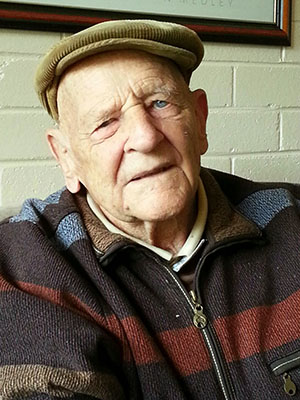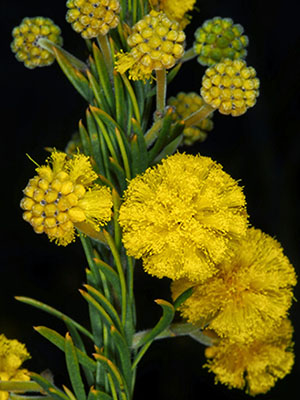Fund blossoms for botanical study
Hans Wissmann was a quiet but constant presence in UNE’s N.C.W. Beadle Herbarium for more than half a century. Even upon his death, he ensured that his presence would still be felt.

Hans Wissmann in his later years.
When current herbarium director Professor Jeremy Bruhl arrived in 1992, Hans had officially retired from his role as technician, but kept volunteering “until he had trouble climbing the stairs”. He would dutifully incorporate plant specimens into the large collection, and help with other tasks that required the care and attention to detail for which he was renowned.
“As a technician, Hans would have retrieved specimens for classes and helped maintain the herbarium,” Jeremy says. “He would have gone on field trips with academics and research students, and tended plants in the Botany glasshouse. He looked after plants alive and dead.”
It was a long association with UNE that began in the 1960s, when Hans joined the workforce as a groundsman after migrating to Australia with his wife Luise and—for a short time—working in an orchard near Armidale. While he had no formal botanical training, a course in agriculture immediately after World War II appears to have stood him in good stead.
Former botany student, friend and now executor of his estate, John Pickett, says Hans “came into his own” when he joined the Botany Department. “He had a profound interest in botany, and working in the herbarium enabled him to advance his knowledge of it,” John says. “Indeed, botany was part of his soul.”
But it was not Hans’ only contribution. Over the decades he worked at UNE, he added some 2014 specimens to the herbarium’s collection from wild or cultivated sources, including plants grown on the UNE campus. Two species— the State-listed vulnerable New England Gentian (Gentiana wissmannii) and a green alga (Oedogonium undulatum var. wissmannii)—are named for him.
“Given Hans’ passion for collecting and growing plants, the herbarium was the perfect ‘home’ for him in retirement,” Jeremy says. “I think he felt at peace here; it gave him a sense of purpose knowing that his contributions were valued. He had great propagation and cultivation skills and a good taxonomic eye.”
With little formal training but lots of on-the-job horticultural and botanical education, Hans’ interest in plant taxonomy blossomed in his own home garden—“a real connoisseur’s garden, that contained all sorts of unusual treasures”, according to John.
“It was great fun to wander about,” he says. “Hans collected plants that were unusual or rare or of interest, that had a quirk of anatomy or an odd evolutionary history. It included many species native to the Northern Tablelands but also featured plants from around the world.”

Acacia torringtonensis cultivated by Hans Wissman in his front yard, photographed by Professor Jeremy Bruhl.
Following Hans’ death in August 2018, at the age of 89, Jeremy was not surprised to learn of his final wishes. “He saw value in the work we do and the studies we encourage at UNE,” Jeremy says. “Systematic botany concerns the evolutionary relationships in the wild that provide the foundation for all study and use of plants, and Hans valued that foundational knowledge and endeavour.”
The fund Hans established will soon begin supporting research by UNE undergraduate, Masters or PhD students of systematic botany. “Such funds enable students to do more, to ask more questions and to seek answers to those questions,” Jeremy says.” Whether it’s field or laboratory work or using expensive equipment or having more samples analysed, this is a means by which Hans can continue to directly or indirectly mentor students using the herbarium.”
John says the fund befits the character of the gentle and unassuming man. “Hans was never comfortable in the limelight,” he says. “This is a quiet but ongoing contribution he has made, an enduring memorial to him that will continue to progress the N.C.W. Beadle Herbarium.
“Hans’ heart was in botany. He was very good at searching for unusual things and the Gentian named after him is so typical of the man himself; Hans would have looked and looked to find something so obscure. But he had these wonderful blue eyes that would really light up when he was pleased about something. I think he would be delighted to know that his bequest can prolong his lifelong interest.”

